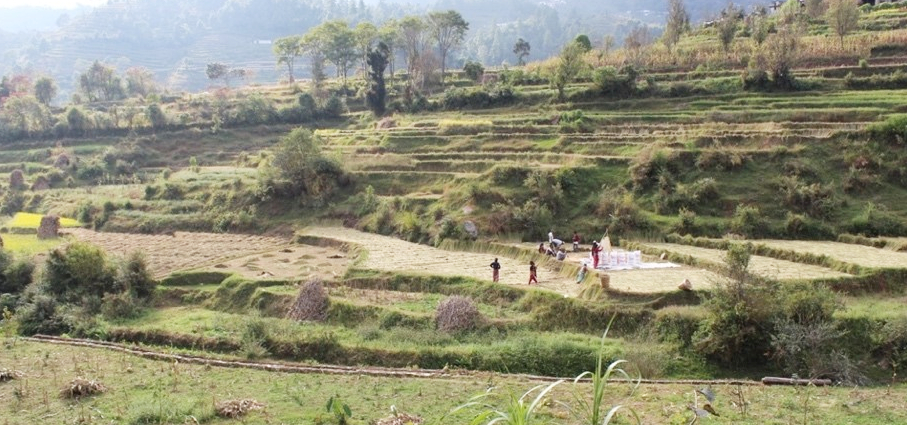Bajrabarahi situated in Makwanpur District, Province No 3, about 50 kilometres southwest of Kathmandu. The community is gifted with abundant natural water resources as several forest born springs run from the mountains into the agricultural lands. Canals for irrigation purposes were built to divert both seasonal and perennial springs. Around 85% of agricultural land in Bajrabarahi is provided by channel irrigation water. Though water resources may seem to be abundant, water shortages have become ubiquitous and water for irrigation competition in addition to conflicts are becoming more obvious. As the situation worsens year after year, there is a real urgent need to identify when are these shortages happening and what are the exact factors behind these punctual but recurring water deficits.
Action taken
In January 2018, the Nepal Agricultural Central Cooperative Federation Ltd. (NACCFL) conducted on behalf of the local Small Farmers Agricultural Cooperative a study on irrigation conflict in the Bajrabarahi community. The aim of the research was to: (1) determine the period(s) of the year when water shortages are most acute; (2) reveal which crops are affected and for how long; (3) identify and assess the weight of the major factors behind these water shortages and; (4) highlight the farmers’ beliefs on why these water shortages occur.
Together in collaboration with the Bajrabarahi Small Farmers Agricultural Cooperative Ltd., NACCFL conducted 41 interviews with both upstream and downstream communities to obtain information about agricultural and water management practices. Qualitative observations, including measurement of flood levels and water flows, were additionally collected to triangulate results from the questionnaire survey. This information was inputted together with climatic variables and processed using CROPWAT 8.0, a computer software developed by the Food and Agricultural Organization (FAO) which calculates crop water requirements. The model would help compare farmers against optimal water use calculations and thus identify which ones have tendencies to under or over irrigate.
Outcomes and lessons learnt
The results from the study show that water shortages are most acute from mid-Febuary to mid-May. Irrigation water requirements analysis reveal that water for irrigation demand spikes indeed during the middle of the spring growing season and at the beginning of planting season in the summer. It is found that water shortages can be primarily explained through a combination of agricultural and climatic factors but that irrigation mismanagement significantly exacerbates this natural water shortage. This case additionally demonstrates that most of this mismanagement actually comes from upstream farmers and that downstream farmers in fact fall under their irrigation requirements.
Some lessons from this case study include:
- Modelling can be used as a tool for farmers to better understand the relationship between the natural water supply and crop water demand, ultimately giving them information on how to adapt agricultural and water management practices.
- Computer software on irrigation crop requirements can help farmers determine the optimal irrigation water use. Water resource modelling can thus be used as a benchmark to determine who is over irrigating and who is under irrigating and therefore also act as an arbitrating instrument in water management conflict situations.
- Water management institutions such as Water User Associations are essential bodies for negotiating water resource conflicts amongst users. Partnerships between these bodies and research initiatives can help foster a wider and more informed dialogue on good water management practices.
- Raising awareness and engaging as many stakeholders as possible is key to achieving implementing an integrated water management strategy. Guaranteeing the equitable and environmentally sustainable use of water needs to be understood as a shared common responsibility for all.

